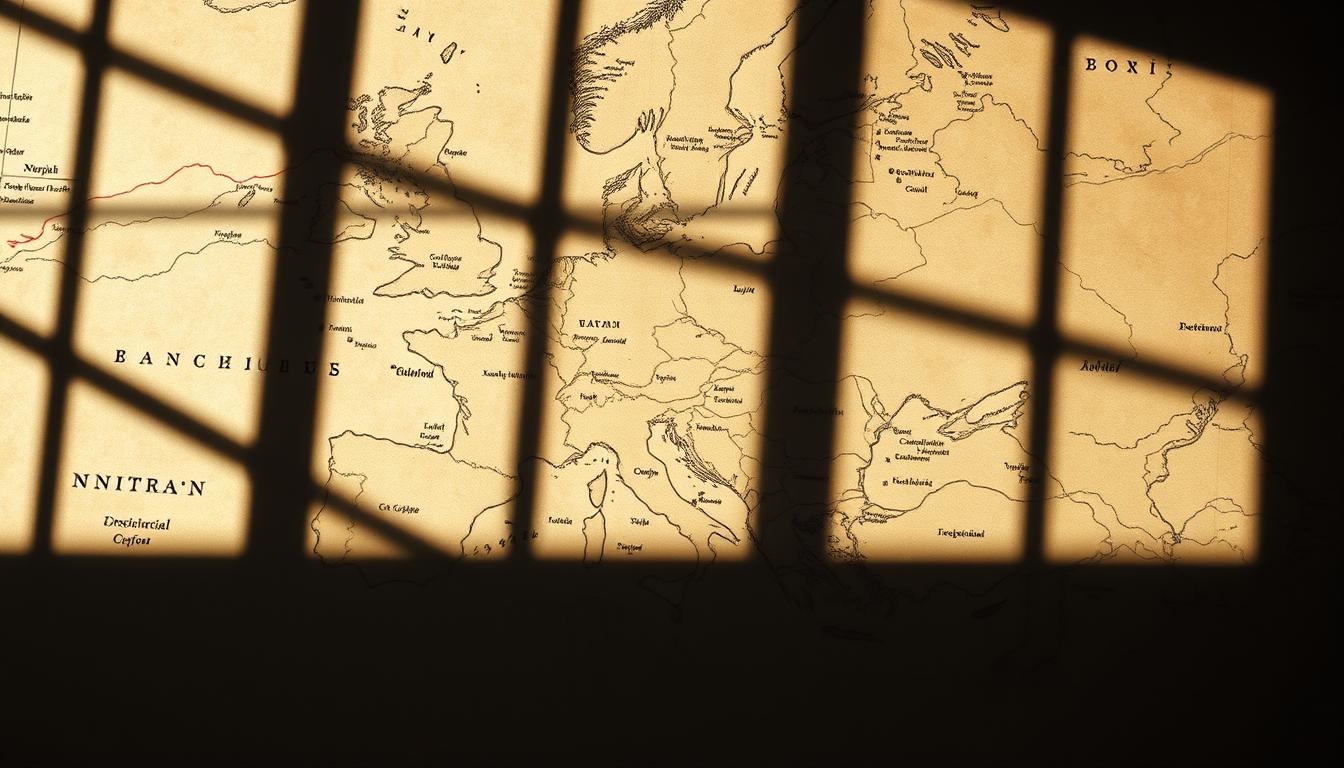Where does Central Europe end and the Balkans begin? This question sparks debates among historians, journalists, and policymakers. Defining regional boundaries involves more than geography—it reflects cultural ties, political alliances, and historical legacies stretching back centuries.
Modern discussions often reference shifting borders and evolving identities. Recent analyses, including reports from Freedom House, highlight how democratic values and governance trends influence perceptions of belonging. For example, the Austro-Hungarian Empire’s legacy still shapes how neighboring areas interact today.
This article explores factual data from historical records, geographical studies, and expert insights. Readers will discover how factors like post-war treaties and contemporary political narratives affect classifications. By examining evidence from multiple angles, clarity emerges on why categorizing nations remains complex yet vital.
Key Takeaways
- Regional classifications blend geography, history, and politics rather than fixed borders.
- The Austro-Hungarian Empire’s influence impacts modern debates about European zones.
- Freedom House reports connect governance trends to regional identity shifts.
- Historical border changes complicate clear-cut definitions of the Balkans.
- Cultural ties often outweigh physical geography in determining regional belonging.
Geographical and Historical Context of Hungary and the Balkans
Deciphering where one European region ends and another begins is a puzzle of past and present. Political alliances and cultural exchanges have redrawn maps far more than physical landmarks. Central Europe’s identity, for instance, stems from empires that once dominated the continent.
Historical Evolution and the Austro-Hungarian Legacy
For centuries, the Austro-Hungarian Empire shaped governance and trade across diverse territories. Its dual monarchy structure connected Danube River cities with Carpathian villages, creating shared infrastructures. When the empire dissolved after World War I, the 1920 Treaty of Trianon carved new borders that still influence modern diplomacy.
The Shifting Borders in Central and Southeastern Europe
Post-war treaties didn’t just reshape one country—they altered entire political landscapes. Ottoman-era conquests added another layer, leaving architectural and linguistic imprints across southeastern areas. As historian John W. Mason notes, “Territorial changes after 1918 turned former imperial provinces into sovereign states overnight.”
Travel accounts from the early 20th century reveal how locals navigated these abrupt shifts. Markets in Timișoara, once part of Hungary, began using Romanian currency within weeks. Such transitions highlight why rigid regional definitions often falter against lived experiences.
Political Dynamics and Democratic Shifts in Hungary and the Region
Over the past decade, political transformations have reshaped governance structures across parts of Europe. Central to these shifts are debates about institutional independence and civic freedoms. Analysts increasingly note patterns connecting leadership strategies in different areas.
Changes in Democratic Norms Since 2010
Since 2010, legislative reforms have centralized authority in ways that alarm watchdogs. A Freedom House report labels this trend as “democratic backsliding,” citing reduced judicial autonomy and constrained press freedoms.
“State-controlled media now dominate public discourse, marginalizing critical voices,”
Parallels With Western Balkan States
Similar patterns emerge in some Western Balkan nations. Serbia’s consolidation of executive power mirrors tactics seen elsewhere, including restrictive NGO laws and academic censorship. Research from the European Stability Initiative reveals:
| Country | Media Freedom Index* | Academic Independence Score | Power Concentration Level |
|---|---|---|---|
| Hungary | 28/100 | Low | High |
| Serbia | 34/100 | Moderate | High |
*Data from Freedom House (2023)
Respected journalists like Szabolcs Panyi highlight how these changes unfolded gradually over years. International news outlets now frequently compare governance models across the region, emphasizing shared challenges.
Is Hungay in the Balkans? Exploring Cultural and Educational Collaborations
Joint projects in academia and culture highlight evolving alliances in Central and Southeastern Europe. The inaugural Hungary-Western Balkans Summit marked a strategic push to strengthen cross-border partnerships through structured frameworks.
Cooperative Initiatives in Education and Research
Budapest recently unveiled seven joint degree programs with universities across the western Balkans. These include dual diplomas in sustainable engineering and Balkan cultural studies. A €12 million innovation fund will support tech startups collaborating across borders.
Researchers from Albania and Serbia now access Hungarian archives through digital portals. “This partnership allows us to rewrite regional narratives,” stated a Belgrade-based historian during the summit.
Economic and Cultural Ties with Western Balkan Countries
New cultural councils coordinate film festivals and art exchanges between cities like Novi Sad and Debrecen. Key developments include:
- A joint venture fund financing renewable energy projects
- Co-produced theater performances touring eight cities
- Shared culinary heritage initiatives promoting gastronomic tourism
Trade volumes with western Balkan nations grew 18% last year, outpacing EU averages.
Impact of EU Membership on Regional Identity
EU structural funds enable 43% of current collaborative projects. Participants report increased mobility among students and professionals. A Skopje-based diplomat noted:
“Shared EU accession goals foster practical cooperation beyond historical divisions.”
These efforts cultivate a distinct regional identity while maintaining national distinctiveness. Joint governance of programs ensures balanced decision-making across participating countries.
Conclusion
Regional identity defies simple categorization, blending centuries of political currents with modern alliances. Historical shifts – from imperial collapses to Cold War divisions – created overlapping loyalties across Central Europe and neighboring zones. Shared governance patterns emerge in recent reports, particularly declining democratic benchmarks noted by watchdogs.
Cultural and educational partnerships now bridge past divides. Joint research programs and cross-border festivals demonstrate renewed collaboration between academic hubs. Trade growth with western Balkan countries outpaces EU averages, signaling strategic realignments.
News analyses reveal parallel challenges: concentrated power structures and constrained civic freedoms appear in multiple nations. A 2023 Freedom House report underscores this trend, documenting similar situations across western Balkan states and parts of Central Europe.
While historical narratives vary, contemporary collaborations suggest evolving regional dynamics. Journalists and researchers must continue tracking how shared projects reshape identities amid political pressures. This interplay between heritage and modern priorities demands ongoing scrutiny to understand Europe’s ever-changing map.







